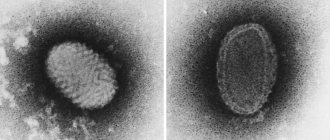Looking for signs that you are in low-carb ketosis is the most effective method of proving that the ketogenic diet is working. Sudden changes in your diet can be pleasant and positive, others not so much. Knowing what to expect from them, you can relatively easily overcome the initial adaptive period, which is usually quite difficult.
The feeling of satisfaction you feel every time you step on the scale can be overshadowed by bad breath, body odor, indigestion and constant hunger. These are frequent companions in the early stages of the keto diet. But at least the awareness of progress towards your goal will help you overcome these difficult days.
One very important thing to remember is that there is a big difference between the normal signs of ketosis and the more serious symptoms of ketoacidosis . Pay attention to the signals given by your body. This will help you lose extra pounds more effectively and safely.
What is ketosis
Ketosis is a special form of metabolic state in the body in which fats and ketone bodies are used as an energy source rather than carbohydrates.
Definition! The state of ketosis is formed due to carbohydrate starvation. During ketosis, the body releases ketone bodies, which are used to break down fat cells to release energy.[1]
Ketosis is a physiologically correct process provided by evolution in order to give the body a chance to survive in conditions of lack of plant food, when switching to exclusively animal products.
Essentially, ketosis is an alternative metabolic process that the body uses when the appropriate conditions are created.
Ketone bodies are present in small quantities in the body during normal metabolism. In a state of ketosis, ketone bodies are formed in an enhanced manner and with a significant excess.
The state of mild ketosis is characterized by an indicator of 0.5 mmol/l.
Important! Ketone bodies are a group of metabolic products produced in the liver. Ketone bodies are involved in energy metabolism by using fats for energy.[2]
Treatment
Fasting ketoacidosis occurs when the body is deprived of essential food and energy for an extended period. While food may seem like an obvious treatment, it can be dangerous for those who have been undernourished for a long time.
When a doctor treats a patient for fasting ketoacidosis, he or she needs to carefully monitor electrolytes. During the process of introducing food, doctors will need to check and restore the patient's potassium, phosphate and magnesium.
One case study involved an anorexic patient who developed fasting ketoacidosis. Doctors treated him with dextrose solution for 15 hours, during which time his ketoacidosis improved.
With proper treatment, including treatment for underlying conditions such as anorexia, the patient should make a full recovery.
How to get into ketosis quickly
The state of ketosis is formed as a result of the following factors:
Heavy physical activity
Starvation
Low carb diet
A number of endocrinological problems in the stage of decompensation
Physiological hormonal surges
A person pursuing the goal of losing extra pounds is interested in a low-carbohydrate diet option. By significantly reducing the amount of carbohydrates in your diet, achieving the desired state of ketosis is quite simple. The rate of entry into ketosis during fasting and low-carbohydrate nutrition can be absolutely the same. However, only a special diet allows you to regulate, and, most importantly, control the state of ketosis. This, in turn, ensures the safety and effectiveness of the adopted method of losing weight.
How to get into ketosis
To form ketosis in the body, a number of conditions will need to be met. A low-carbohydrate diet alone will not be enough. It is necessary to provide the opportunity to follow a simple algorithm of actions.
- Reduce the share of carbohydrates in your daily diet to 20 grams per day.
- Incorporate intermittent fasting into your practice. To do this, it is necessary to remove one of the meals so that at least 18 hours pass between the last meal and the next meal. The most convenient option is to remove dinner or breakfast. Intermittent fasting does not have to be practiced every day.
- Include fatty foods in your diet. With a ketogenic diet, you don't have to worry about fat. On the contrary, it is fats that should form the basis of the daily diet. Fats account for 50-70% of the diet. The rest is distributed to proteins. And, only the remaining minimal percentage is allocated to carbohydrates.
- Distribute physical activity wisely. At first, when switching to a ketogenic diet, the body may experience difficulty with physical activity. You can't overdo it. Physical activity is increased gradually. If a keto-flu condition has developed, it is recommended to wait it out, and only then increase the rhythm of daily physical activity.
Attention! At the beginning of the journey, it is best to reduce the amount of carbohydrates in the diet gradually, following the step-by-step steps “up to 80 grams of carbohydrates per day”, “up to 50 grams of carbohydrates per day”, “20 grams of carbohydrates per day”.
If you do everything correctly, it doesn't take much time to form ketosis. After approximately 7-10 days, a person notices the first signs of ketosis. There is no point in switching too sharply to an unusual metabolic format. Besides, it's not safe.
Keto flu.
The body of many people reacts to the lack of simple carbohydrates and the restriction of complex ones quite negatively, warn experts from Harvard Medical School . During the first one or two weeks, you may experience a whole range of unpleasant sensations, which together are called keto flu. This is not a medical term. Its existence is exclusively conditional and not every dieter can “get over” it.
Keto flu symptoms include brain fog, dizziness, fatigue, insomnia, irritability, nausea and stomach pain. Until now, no one knows exactly the reason for its occurrence. Either this is the result of the immune system’s reaction to a change in the composition of the intestinal flora, or the consequences of refusing carbohydrates.
Keto flu is not a real flu. This disease does not progress, and the symptoms are mild enough for the person to be unable to work.
Just make sure your body is getting enough fluids. Eat food more often and in smaller quantities. You can also return to eating small amounts of simple carbohydrates. Gradually reducing their number in the future, instead of abruptly abandoning them. After one to two weeks, if you can stand it, the symptoms disappear.
How to understand that ketosis has developed
A number of characteristic signs will help you understand that your body is in ketosis.
- Dry mouth.
- Metallic taste and smell of pickled apples in the mouth.
- Increased thirst and frequent urination.
- Weakness, which will later be replaced by a surge of energy.
- Decreased appetite.
Once a person enters a state of ketosis, they do not lose their appetite completely. However, cravings for junk food are significantly reduced. Suddenly, you stop craving sweets, fast food and other things that are of little use, but so familiar in everyday life.
Optimal Level of Ketosis
The boundaries of the optimal level of ketosis for a ketogenic diet are quite wide. A state of mild ketosis is acceptable. However, it is important that gradually it moves into the level of medium and/or deep ketosis. However, when reaching medium and deep levels, amplification is not required.
It has been proven that weight loss due to the breakdown of fats during ketosis begins already at a level of concentration of ketone bodies in the blood of 0.5-0.7 mmol/l. When the average level of 1.5-3.0 mmol/l is reached, the speed and intensity of weight loss increases. And, when the concentration of ketone bodies reaches above 3.0 mmol, the positive dynamics are dulled.
Deep levels of ketosis and higher are achieved mainly through fasting. If such an increase in the content of BOMK in the blood is noticed, it is better to “slow down” a little. To put it simply, you need to slightly add carbohydrates to your food.
ATTENTION! A blood ketone level of 10 mmol/L or higher indicates the development of a dangerous state of ketoacidosis! This condition requires immediate contact with medical specialists and emergency treatment.
Pathological ketoacidosis and dietary ketosis are different conditions. There are clearly defined boundaries and signs that allow the two conditions to be recognized and distinguished.
How to lose weight on keto and whether you need to count calories
The essence of the keto diet: basics and rules
How to get back on keto after a breakdown
How and why to drink apple cider vinegar on a keto diet
Facts about carbohydrates.
Without going into too much detail, there are 2 main types of carbohydrates, explains the International Sports Sciences Association .
The first is simple carbohydrates. They are found in dairy products, fruits, and refined cereals. Such as white rice, carbonated drinks and sugar.
The second is complex carbohydrates. They are rich in legumes, brown rice, corn, green leafy vegetables, lentils, oatmeal, peas, potatoes, bread and durum wheat pasta.
The main difference between them is that complex carbohydrates contain fiber, which slows down the process of their absorption by the body.
It is very important to understand that excessive consumption of calories, mainly contained in sugar, leads to an overabundance of simple carbohydrates that the body is not able to absorb. As a result, he begins to put them in reserve.
Eating large amounts of simple carbohydrates provokes an insulin response aimed at clearing the blood of excess sugar. The result may be a sudden loss of strength. In addition, it causes the brain to send signals of hunger, which in turn can lead to overeating.
The keto diet eliminates simple carbohydrates from the diet, depriving the body of glucose, which leads to burning fat instead.
What is ketoacidosis
Unlike dietary ketosis, ketoacidosis is a dangerous pathological condition that requires medical intervention. Most often, ketoacidosis is a complication of decompensated diabetes. People with healthy carbohydrate metabolism and no insulin problems rarely develop ketoacidosis. But it doesn’t hurt to know the signs of this condition.
Definition! Ketoacidosis is an acute condition associated with impaired carbohydrate metabolism that occurs due to insulin deficiency. There is a type of non-diabetic ketoacidosis that is often found in children - this is the so-called. acetone syndrome, also associated with an uncontrolled increase in the level of ketone bodies in the blood.[3]
In ketoacidosis, along with the increase in ketone bodies, the blood sugar level also increases. Due to this, the acid-base balance of the blood is disrupted. In simple words, blood acidification occurs.
Signs of ketoacidosis include:
- Strong headache;
- vomit;
- diarrhea;
- dehydration;
- weakness, apathy;
- excessive dry mouth.
This pathological condition develops rapidly. In the absence of proper medical care, a person quickly loses his ability to work, becomes lethargic, and loses consciousness. The development of ketone acidosis is indicated by a characteristic sour body odor. You can smell a distinct smell of acetone from your mouth. The surface of the skin takes on a greenish-gray, pale yellow tint. The next stage in the development of ketoacidosis, without proper medical intervention, is coma.
If you have at least 2 of the listed signs, consult a doctor immediately!
In healthy dietary ketosis, when ketone levels reach a certain point, the body produces enough insulin, which helps prevent unwanted developments.
Another difference between dietary ketosis and diabetic ketoacidosis is that in healthy ketosis, a person does not feel sick. With the exception of the keto flu, which passes quickly and without a trace, the person is alert, able to work and does not feel significant discomfort. Otherwise you should be wary. It is important to consider that the keto diet has a number of contraindications due to the state of ketosis!
How to return to Keto after a breakdown
Keto fat bombs: TOP 10 recipes
Keto broths: TOP 6 recipes
Keto sauces and dressings: recipes
Is ketosis safe?
Dietary ketosis, which is formed through the practice of ketogenic nutrition, is safe for a healthy (in the absence of contraindications) body. However, against the background of the development of ketosis, keto flu can form. This is also a harmless, quickly passing condition.
Experts say! The keto diet is a serious undertaking that must be carried out within the framework of a competent approach. Initially, the technique was developed as a nutritional therapy for a number of diseases of the central nervous system.[4]
Mild ketosis has been shown to promote:
- control of prediabetic condition;
- weight loss, obesity prevention;
- prevention of convulsive conditions;
- improving healthy muscle tone.
The ketogenic principle of nutrition is often used by athletes to effectively and safely reduce and maintain body weight.
Reviews and results
Artem, 28 years old, St. Petersburg I practice the ketogenic diet regularly, but no longer than 2 weeks.
It helps to finally polish the muscle relief after gaining muscle mass. I'm pleased with the result. Veronica, 32 years old, Moscow This is not the first time I have used the Keto diet. The only side effects were bad breath and I felt weak in the first days. However, losing 10 kg is worth such small sacrifices. In addition, dishes prepared according to special recipes for ketogenic nutrition are quite nutritious.
Contraindications
Ketosis, which is the basis of the keto diet, has a number of contraindications. They must be taken into account when deciding on the choice of a given type of food.
The keto diet should not be practiced in the following situations:
- type 1 diabetes mellitus;
- insulin-dependent diabetes mellitus type 2;
- some liver and kidney diseases;
- heart and vascular diseases;
- hypertension, complicated, uncomplicated;
- gastrointestinal diseases in the acute phase;
- postoperative period;
- pregnancy;
- children under 18 years of age.
If you have chronic and/or acute diseases, consultation with a doctor is required!
What to do if ketosis does not start
It also happens that while following the keto diet, the state of ketosis does not occur for a longer period than expected. What to do then?
- Make sure that ketosis has indeed not occurred. To do this, you need to measure your ketone levels using any of the available methods.
- Don't panic and don't wait for immediate accomplishments. And especially not to make decisions rashly.
- Carefully analyze your carbohydrate intake. There may be errors in calculation or inaccuracies in determining the type of carbohydrates.
- Calmly and measuredly follow the recommendations of specialists on ketogenic nutrition.
Each person's body is individual. Therefore, it is impossible to name strictly limited periods for the onset of ketosis that are fair for absolutely everyone. For some things go faster, for others smoothly and gradually. Don't worry too much about this. It is important to remember that the road can be mastered by those who walk. But we must not forget that in rare cases the chosen diet may not suit someone. In this case, you should consult with specialists and choose a more suitable nutrition option.
Experts argue! The keto diet has a number of advantages, but there is also a list of disadvantages. Much depends on individual health characteristics. However, we should not forget that a state of ketosis helps to contain and prevent the development of certain diseases.[5]
KETO pasta, pasta, noodles - a selection of recipes
How and why to drink apple cider vinegar on a keto diet
Keto cottage cheese casserole: 5 best recipes
Reason six: not enough food
The mantra of the keto diet is to eat until you are full. But switching to a high-fat, low-carbohydrate diet can be psychologically difficult after many years on a “proper diet,” where you had to eat a portion and a little. “A common story is that you eat a keto diet according to keto proportions, but count yourself such a ridiculous amount of calories that you have no strength to think or move,” notes Olena Islamkina, a keto diet specialist and creator of the “Weight Loss on a Keto Diet” course. “Paradoxically, if you don’t eat enough on a keto diet, you won’t lose weight or experience those pleasant bonuses that we love keto so much for.”
The main thing is brief
- The state of ketosis is a healthy dietary state caused by a decrease in carbohydrates in the diet due to metabolic changes.
- With ketosis, the dynamics of weight loss are formed, the development and exacerbation of certain diseases is prevented.
- It is necessary to enter ketosis competently, smoothly, without strain. It is important to monitor your state of ketosis and well-being!
- With proper control of carbohydrate intake, ketosis occurs quickly and is effective.
- Ketosis is safe for people who have no contraindications to the keto diet.
- You can monitor the state of ketosis using special means of measuring ketone bodies or using general signs.
- When you are in ketosis, you should feel good. Feeling sick may indicate keto flu or some kind of disorder in the body.
Who is recommended to undergo ELISA testing?
ELISA tests act as a universal method of mass screening of the population. This test is primarily carried out by patients with symptoms of ARVI, pneumonia, contact persons, patients requiring planned hospitalization or surgery, staff of medical institutions interacting with patients with COVID-19 and representatives of other industries where there is a high risk of infection during the performance of work duties .
We offer testing for Covid in Rostov at our medical center for clients who interact with a large number of people. You can choose the production time and the system by which the study will be conducted. Contacting us will help you identify the disease in a timely manner and begin its treatment.
The cost of all services of the medical center can be viewed in the “Price” section or by calling the 24-hour hotline.








